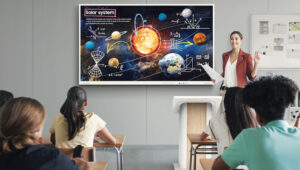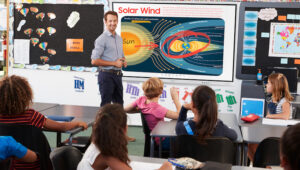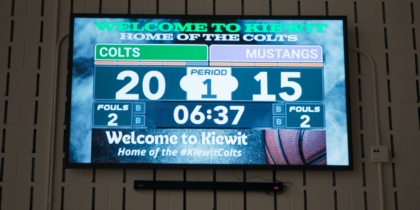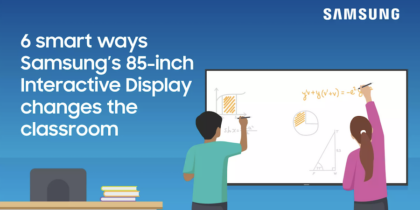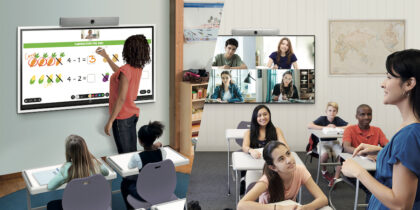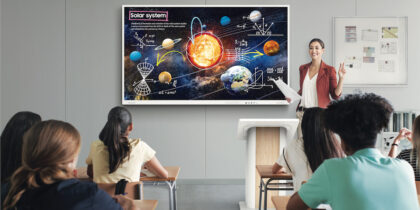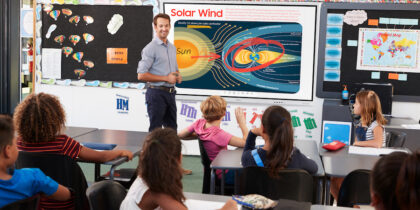If you’re not using VR in the classroom yet, chances are you soon will be, and many teachers are wondering how best to employ it.
Virtual field trips are often the first option that comes to mind when discussing virtual reality in education. There are plenty of enticing adventures out there, whether it’s a visit to an internationally renowned museum or a dive to a spectacular coral reef. And everyone loves a good field trip — especially to sites not on most schools’ “real-world” jaunt list, like Antarctica or the International Space Station, or to worlds and objects that no longer exist, like ancient Greece or the Titanic.
Teachers can make these trips as educational as they are entertaining. Students can strap on headset technology — such as a Samsung Gear VR — to visit the Great Wall of China, for instance, as part of an exploration during which teachers can engage them in math exercises like calculating how long it would take to walk its length.
VR in the classroom also offers many more opportunities for classroom instruction beyond virtual field trips. For example, a desktop virtual reality learning environment like zSpace offers a way to enhance STEM learning. Its virtual lab applications for science, technology, engineering and math include various standards-based activities that teachers can integrate into their curriculum. Students can gain a better understanding of how the heart works, for example, by picking up a virtual one with a stylus and peeling layers back to see how it looks inside as it beats.
It’s All About the Engagement
Ben Fineman, NET+ video, voice and collaboration services program manager at the Internet2 research and education network, points to a demo project called “World of Comenius” as another example of the new pedagogical opportunities enabled by a virtual reality learning environment. Students at Mendel Grammar School in Opava, Czech Republic, piloted this VR experience using Leap Motion controllers that tracked their hands. “The students can have hands-on biology and physics experiments,” Fineman says. “They can go inside the anatomy of the human eye and manipulate different parts of it to get a feel for how it works. That changes the game from a student engagement perspective.”
That’s also true when it comes to teachers leveraging the VR support that’s been added to Minecraft. They can tap into Minecraft constructs to teach math concepts or into its support for rudimentary circuits to teach computer programming concepts. “Minecraft is something that students are interested in, and if you can integrate lessons into that immersive [VR] environment, they’re more likely to pay attention and have better learning outcomes,” he says.
“VR as a communication medium works well when you have groups,” as is the case in real or online classrooms, affirms Gerald Gottheil, marketing lead at AltspaceVR, which offers a social VR communication platform. Used on systems including the Samsung Gear VR, AltspaceVR lets people come together as avatars in its full-VR, live 3D space. At the high school and higher-ed levels, the immersive experience it provides is a good alternative for distance learning, he says. Some developers have also used its SDK to develop apps that convey concepts in mechanics and physics, displaying data in 3D to help students understand basic principles in innovative ways. For example, Gottheil says, “We have an app in AltspaceVR that shows the planets and the sun. They pop up in 3D and surround you. The planets move around the sun in speeds in proportion to their actual orbit times. So you can see the relative time and speed as they circle the sun.”
Learn about even more ways that VR can provide students with immersive learning experiences here.

